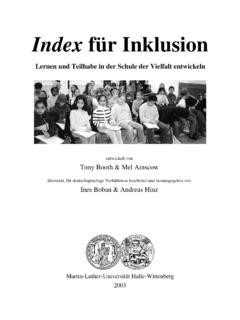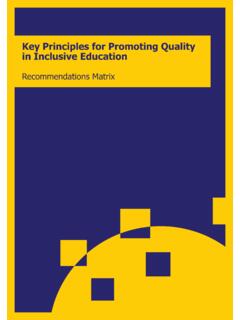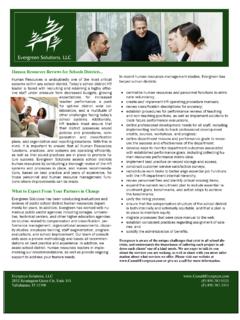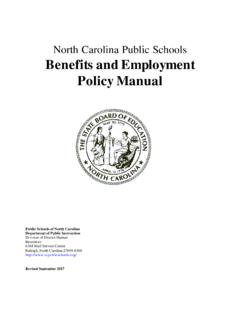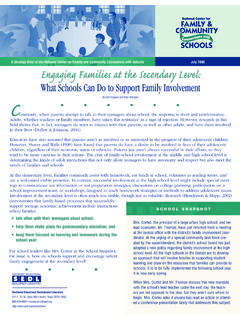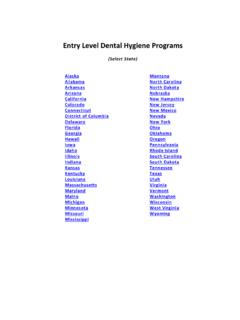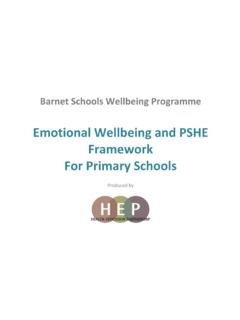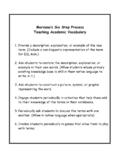Transcription of Index for inclusion - EENET
1 Index for inclusiondeveloping learning and participation in schoolsTony Booth and Mel Ainscow editing and production for CSIE Mark VaughanPublished by the Centre for Studies on Inclusive Education (CSIE) CSIE supporting inclusionchallenging exclusionCentreforStudiesonInclusiveEduc ation 2002 CSIE. Booth, T and Ainscow, M (2002) Index for inclusion : developing learning and participation in version has been prepared for display on the CSIE and EENET websites and can only be used for non commercial education purposes, on the condition that the source is acknowledged.
2 2002 CSIE. Booth, T and Ainscow, M (2002) Index for inclusion : developing learning and participation in version has been prepared for display on the CSIE and EENET websites and can only be used for non commercial education purposes, on the condition that the source is 1an inclusive approach to school development 1 Welcome to the Index for inclusion 1 Key concepts: developing a language for inclusion 2 The review framework: dimensions and sections 7 The review materials: indicators and questions 9 The Index process 10 The Index in use 10 What schools can hope to achieve 11part 2the Index process 13phase 1 Getting started with the Index 15phase 2 Finding out about the school 23phase 3 Producing an inclusive school development plan 31phase 4 Implementing priorities 33phase 5 Reviewing the Index process 36part 3indicators and questions 39 List of indicators 39 Indicators with questions 42part 4summary sheet and questionnaires 87part 5further reading and Disability Equality in Education 99
3 2002 CSIE. Booth, T and Ainscow, M (2002) Index for inclusion : developing learning and participation in version has been prepared for display on the CSIE and EENET websites and can only be used for non commercial education purposes, on the condition that the source is acknowledged. 2002 CSIE. Booth, T and Ainscow, M (2002) Index for inclusion : developing learning and participation in version has been prepared for display on the CSIE and EENET websites and can only be used for non commercial education purposes, on the condition that the source is for inclusion developing learning and participation in schools1part 1 an inclusive approach to school developmentWelcome to the Index for inclusionThe Indexis a resource to support the inclusive development of is a comprehensive document that can help everyone to find their ownnext steps in developing their setting.
4 The materials are designed tobuild on the wealth of knowledge and experience that people have abouttheir practice. They challenge and support the development of anyschool, however inclusive it is thought to be currently. inclusion is often associated with students* who have impairments orstudents seen as having special educational needs . However, in theIndex, inclusion is about the education of all children and young Indexoffers schools a supportive process of self-review anddevelopment, which draws on the views of staff, governors, students andparents/carers, as well as other members of the surroundingcommunities.
5 It involves a detailed examination of how barriers tolearning and participation can be reduced for any student. The Indexis not an additional initiative but a way of improving schoolsaccording to inclusive values. It is not an alternative to raisingachievement but about doing this in a way that builds collaborativerelationships and improvements in the learning and teachingenvironment. In attending to values and the conditions for teaching andlearning it can help to sustain improvements in schools. It encourages aview of learning in which children and young people are activelyinvolved, integrating what they are taught with their own experience.
6 It isa practical document, setting out what inclusion means for all aspects ofschools; in staffrooms, classrooms, and Indexwas produced over a three year period, with the help of ateam of teachers, parents, governors, researchers and a representative ofdisability organisations, who had wide experience of encouraging theinclusive development of schools. An initial version was piloted in sixprimary and secondary schools and then a modified version wasevaluated in a detailed programme of action research in seventeenschools in four local education authorities (LEAs).
7 The schools found thatthe materials helped them to identify issues for development that mightotherwise have been overlooked and to put them into practice. They alsosuggested ways in which the materials could be improved. The firstpublished version was produced in March 2000 and was distributed freeto all primary, secondary and special schools and LEAs in England, by theDepartment for Education and Employment. This new edition, thoughbroadly similar to the previous version, simplifies the language of theIndexand contains other modifications in response to comments on, andobservations of its use.
8 * Within the materialswe use the termstudents to refer tochildren and youngpeople in schoolsirrespective of age. 2002 CSIE. Booth, T and Ainscow, M (2002) Index for inclusion : developing learning and participation in version has been prepared for display on the CSIE and EENET websites and can only be used for non commercial education purposes, on the condition that the source is for inclusion developing learning and participation in schools2 Using the Index in a variety of waysThere is no right way of using the Index . Part 2describes only one way of using it.
9 It assumes thatthe process is started and led from within individualschools. However, many schools find it useful tohave support, in getting started with the Index , fromsomeone with previous knowledge of using it. In some areas, clusters orfamilies of schools work in collaboration with each other and LEAadvisory staff. They have found that such arrangements give them addedimpetus to keep going. Part 2 is also written as if, from the start, the intention is to integrate theIndexwork with an existing school development planning process. Someschools begin on a smaller scale, for example, in using the materials toraise awareness about inclusion with teachers and governors.
10 This maythen lead on to work in greater depth. Others have taken on the sectionsof the Indexto do with improving staff conditions and relationshipsbefore looking more generally at teaching and learning. The Indexhasbeen used to structure a piece of individual or group research byteachers in a school . Any use is legitimate which promotes reflectionabout inclusion and leads to greater participation of students in thecultures, curricula and communities of their contents of the IndexThere are four elements to the Index :Key concepts to support thinking about inclusive school framework: dimensions and sections to structure the approach to the evaluation and development of materials: indicators and questions to enable a detailed review of all aspects of a school and help toidentify and implement priorities for change.







